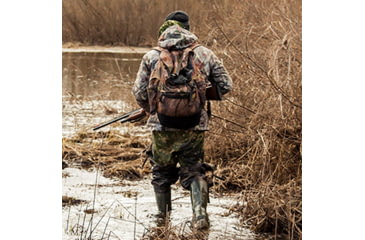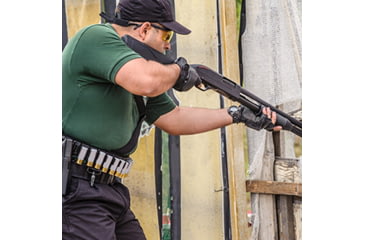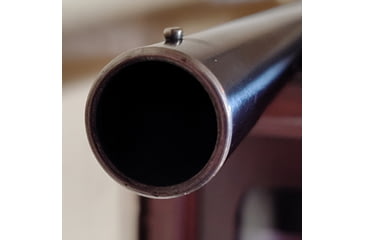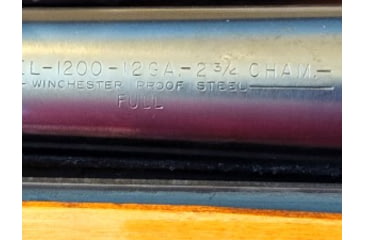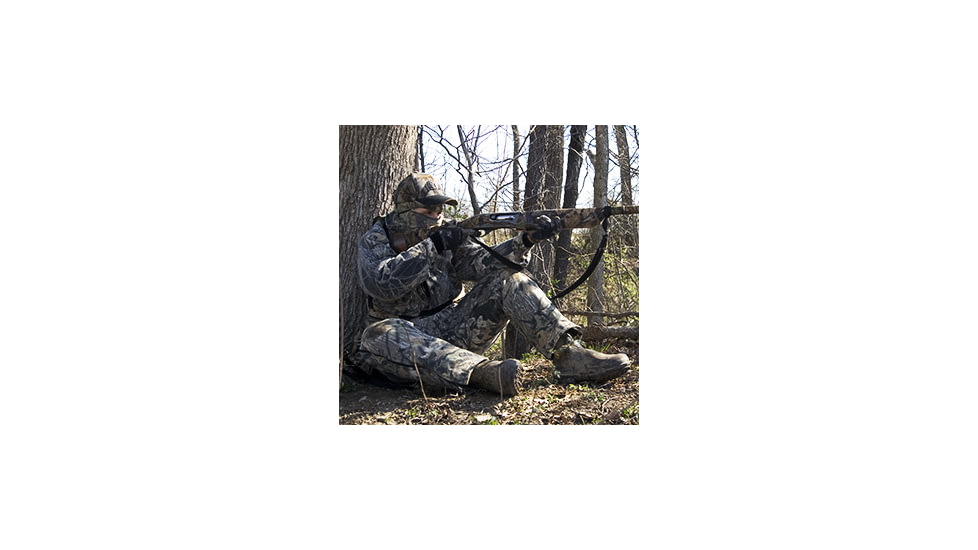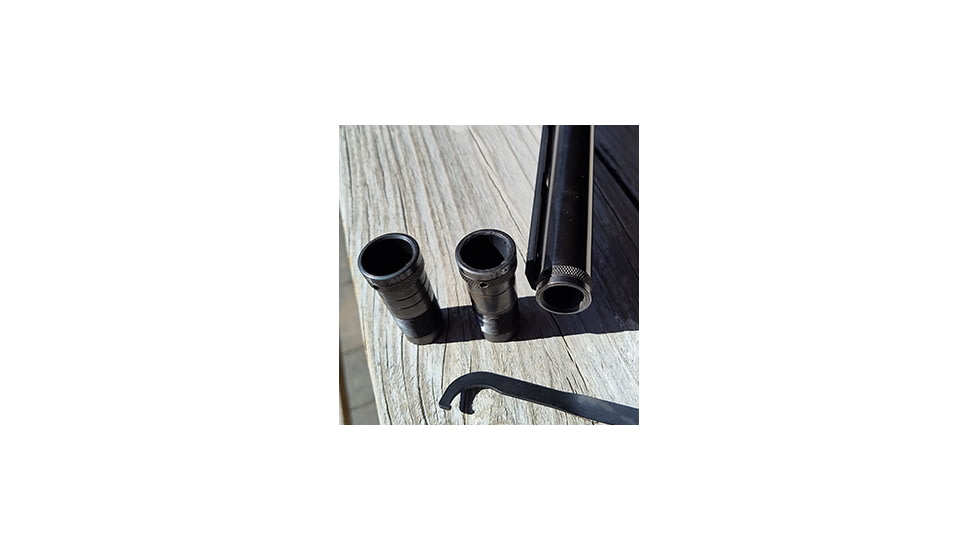Shotgun chokes were invented in the late 1800s to create tighter shot patterns by having a smaller muzzle than the rest of the barrel. They became more and more popular by the 1940s. The shotgun choke refers to the size of the muzzle at the end of the gun's barrel, and it's one of the most important parts of a scattergun. A choke tube controls the pattern of the projectiles (called "shot") when the gun is fired. The pattern is determined by what percentage of lead shot hits within a 30-inch circle when fired at a distance of 40 yards. This is not exact as every shotgun will pattern a least a bit differently from another, and different shotshells are another variable factor. As they say, "It's close enough for government work." I'll cover how to choose and use the 5 basic types of shotgun chokes and the more specialized types that are increasing in today's market. To learn more about ammo, check out our "Types of Shotgun Shells: 3 Need-to-Know Basics" article.![]()
(Basic) List of Shotgun Chokes:
- Cylinder (no choke)
- Improved (Imp.) Cylinder shotgun choke
- Modified shotgun choke
- Improved Modified (Imp. Mod.) shotgun choke
- Full shotgun choke
Fixed and Interchangeable Chokes
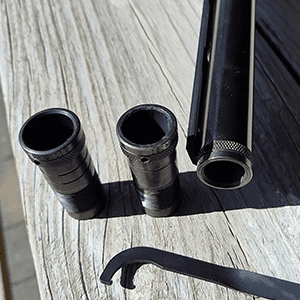
There are two ways that they're designed: fixed chokes or interchangeable shotgun choke tubes. A fixed choke means that when the gun is manufactured, the choke is set and can't be changed without a full barrel swap or sending it to a gunsmith to be altered.
Modern interchangeable choke tubes, also known as "screw-in chokes," allow a wide variety of different patterns to make a single gun's barrel as versatile as possible. Hunters were slow to adopt them, but into the 1970s and 80s, they'd gained acceptance. These days, nearly every shotgun manufacturer has several models with interchangeable choke tubes, and they've become far more common than fixed chokes.
Interchangeable chokes have a special system of identification that usually uses notches, stars, or sometimes dots, all outlined in the chart below. The number of notches, stars, or dots all mean the same thing, no matter what symbol is used. There are some older interchangeable chokes like Browning that use combinations of stars, dashes, and letters. If you come across anything like that, check the manual or visit the manufacturer's website to correctly identify them.
Please note: A gun outfitted for screw-in choke tubes should never be fired without a choke tube because it will damage the gun and could create unsafe conditions. Likewise, a screw-in choke should be firmly snugged in with the included wrench or key. Check it every 100 rounds or so to ensure it hasn't come loose.
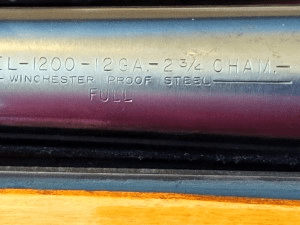
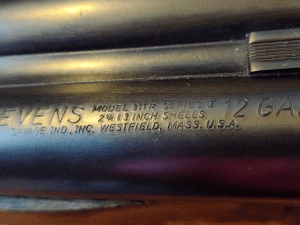
All of the terms for sizes apply to fixed or screw-in chokes and will usually be clearly stamped onto the barrel of a fixed choke (almost always). Some old shotguns don't have the fixed choke size stamped where you can easily see it. On some, you have to take the gun apart to find the stamp. On others, like the double-barrel pictured, it's not stamped anywhere on the gun, but a quick internet search reveals that the "Stevens Model 311R" on the barrel means it's a riot gun designed for police use and is a fixed cylinder choke (aka "no choke") on both barrels.
Cylinder Choke/No Choke
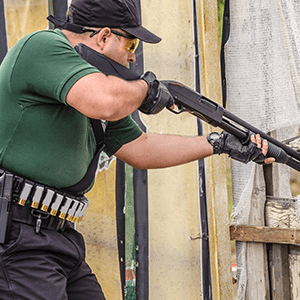
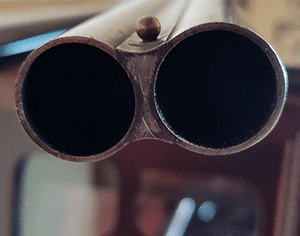
If you're wondering which choke is the most open, it's the Cylinder, which is actually no choke at all. The "Cylinder" or "No Choke" is the simplest shotgun choke. On a screw-in choke, it's identified with 5 notches (IIIII). It's also the original fixed bore design of shotguns. The Cylinder choke is just a straight pipe or tube with no constriction of the shot being fired. Because there's no constriction, the pattern is very wide, roughly 40% at 40 yards. That certainly doesn't mean they're useless, though.
Since a Cylinder has such a wide pattern, they're great for hunting small game in thick brush or woods where your range is limited and the critters are really cruisin' for cover. At 25 yards, the pattern is around 70% which is nothing to scoff at. This same short-range effectiveness makes them pretty common for home defense, and a lot of law enforcement use them as duty shotguns. Firing any size of buckshot loads can be devastating in close quarters.
Improved/Imp. Cylinder Choke
The "Improved Cylinder," often abbreviated to "Imp.," is a step up from the Cylinder. It's identified by 4 notches (IIII) on a screw-in choke. The constriction is 0.25mm/0.01in. This provides a pattern of 50% at 40 yards, much better than a plain Cylinder. That 10% may not seem like much, but if you consider the number of pellets in a shotshell, it can be a lot. As an example, a very common small-game hunting cartridge is a 12-gauge 3-inch loaded with 7-½ size shot. They have roughly 428 lead pellets, so 40% in a Cylinder would be about 171 pellets inside the 30-inch circle. That same shell through an Imp. choke would be about 214, a difference of 43 more pellets. It's still pretty short-range compared to tighter choke patterns but has great hunting applications for close-up waterfowl or upland game. They do well with rifled slugs for hunting mid-sized to big game like deer at ranges out to about 50-75 yards.
Modified/Mod. Choke
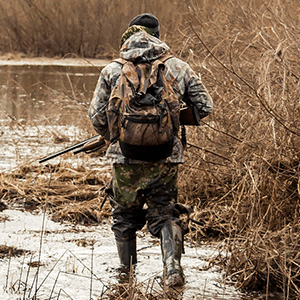
A "Modified Choke," commonly referred to as a "Mod.," is the middle-of-the-road choke identified by 3 notches (III). It patterns 60% at 40 yards with the 0.51mm/0.02in. constriction from barrel to muzzle. It is considered by many to be the best choke for duck hunting. I like it as a general choke if I'm going to be hunting in areas that are brushy or alternate between brush, open fields, and trees as I hike along. It's also my pick for the best choke for pheasant. They're also popular general waterfowl chokes as they can be used with a wide variety of shot including steel, lead-free, and other nontoxic ammo that's legally required for hunting waterfowl.
Improved Modified/Imp. Mod.
The "Improved Modified," or "Imp. Mod.," patterns 65% of the pellets at 40 yards. Its constriction is 0.635mm/0.025in. barrel to muzzle, and is identified by 2 notches (II). They're nice for fowling when birds are flushing and flying further away from hunters, which can happen more frequently when hunting with dogs who tend to be quite a bit further ahead in the field.
I like them for squirrels in the woods who are notorious for jumping tree-to-tree before stopping a ways away to curse you out. Rabbits will explode from underbrush so fast that it can startle you enough to slow down shouldering your shotgun before they're out of range of the more open chokes. Like a squirrel, once a rabbit feels like it's a safe distance away from the threat, it'll often stop to assess the situation, giving you another chance at it.
Full Choke
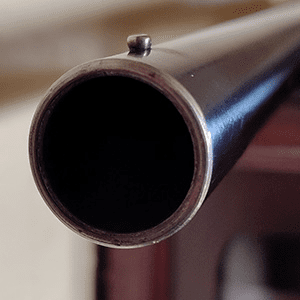
The tightest of the basic 5 chokes, the "Full Choke," patterns 70% at 40 yards and has a constriction of 0.76mm/0.03in. barrel to muzzle. They're identified by, you guessed it, 1 notch (I). They're designed for long-range shotgun applications as the best choke for trap, waterfowl that's passing overhead, and turkey hunting. They require more precision at close ranges and can be too much for bird and upland-game hunting if you hit the animal, or they can increase your odds of missing a small moving target at close range.
They're also used in combination with buckshot to keep a tight pattern at further distances or maximize the wound channel(s) at close range.
Turkey and Other Specialized Chokes
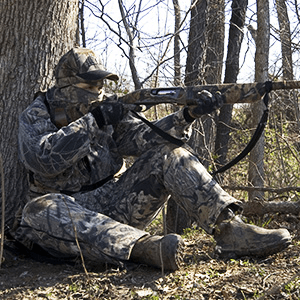
Now that you understand the 5 basic choke sizes, here are the most common specialized chokes. I've put them into this ordered list so you can see where they fit into the size ranges:
- Cylinder (no choke)
- Skeet 1: Specialty choke for skeet shooting, a form of moving (clay) targets for shotguns. Constriction is 0.13mm/0.005in. barrel to muzzle, and patterns 45% at 40 yards, 75% at 25 yards. Usually identified as "SK1" instead of notches.
- Improved/Imp. Cylinder
- Skeet 2 (Light Modified/Light Mod.): Another specialty choke for shooting clay pigeons (targets), but a little further out than Skeet 1. Constriction is 0.38mm/0.015in. barrel to muzzle, patterning 55% at 40 yards. Usually identified as "SK2" instead of notches.
- Modified/Mod.
- Improved Modified/Imp. Mod.
- Full
- Extra Full: Obviously tighter than a regular Full, this provides a 73% pattern at 40 yards and has a constriction of 1.015mm/0.04in. Usually used when longer distances than a Full are desired. Still often identified with 1 notch (I), but normally have "Extra", "XF", or similar indicators on them.
- Turkey: Wondering which shotgun choke has the tightest shot pattern? The constriction on these chokes is at least 1.145mm/0.045in. and provide at least a 75% pattern at 40 yards, making them stand out well above the others for tight patterns. As the name implies, these highly specialized chokes are the best choke for turkey hunting. Ideal shot placement on a turkey is the head to ensure an ethical kill, only hit one turkey in a group of birds, and minimize any stray shot getting into the meat. Turkeys are very wary, have excellent vision, and acute hearing. As a result, you may very well only get one shot and you have to make it count. Like the Full and Extra Full, they usually bear 1 notch (I) for identification but almost always have printing or stamping that differentiates them as Turkey Chokes, like "TKY".
Quick List of Interchangeable Screw-In Choke Identifications:
- Cylinder = 5 notches (IIIII)
- Skeet 1 = SK1
- Improved Cylinder = 4 notches (IIII)
- Skeet 2 = SK2
- Modified = 3 notches (III)
- Improved Modified = 2 notches (II)
- Full = 1 notch (I)
- Extra Full = 1 notch (I) + Extra, EF, EX, etc.
- Turkey = 1 notch (I) + Turkey or TKY
All Choked Up
Quick List of Best Chokes By Application:
- Best Choke for Skeet Shooting = Skeet 1, Improved Cylinder (Imp.), Skeet 2
- Best Choke for Duck Hunting = Modified/Mod. Choke
- Best Choke for Pheasant = Modified/Mod. Choke
- Best Choke for Trap = Full
- Best Choke for Turkey Hunting = Specialty Turkey Chokes
Hopefully, I've managed to enlighten you on the finer points of shotgun chokes and interchangeable screw-in choke tubes from Cylinder to Turkey and everything in between. When you combine the correct choke with specialized ammo, you'll get peak performance out of your shotgun. As you shop, you'll find others that aren't mentioned here like coyote tubes, waterfowl tubes, and many more that are designed for specific prey and applications. Technology develops all the time, and new products come out on the market regularly. As always, you should check your firearm's specifications in the user manual or manufacturer's website before firing any kind of ammunition or using after-market choke tubes. Let us know what you think in the comments below, and happy hunting!
